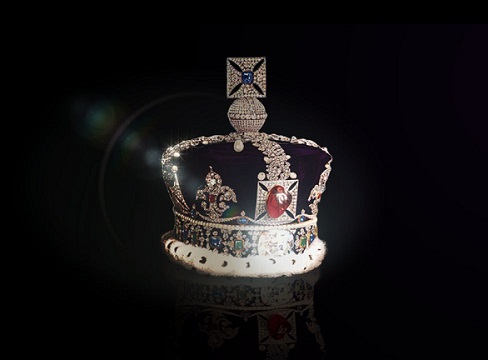
Details of the timetable of official events are beginning to be revealed following the death of Queen Elizabeth II, Britain’s longest ever reigning monarch.
Here’s what we expect to happen in the days ahead, including the journey of the Queen’s coffin from Scotland, her lying in state and the state funeral on Monday 19 September.
Scottish vigil
The Queen’s coffin stayed overnight in the Throne Room of the Palace of Holyroodhouse in Edinburgh – the official residence of the British monarch in Scotland. The coffin arrived in the city after a six-hour journey from Balmoral Castle along streets and roads lined with people who wanted to pay their respects.
On Monday, the King and members of the Royal Family will accompany the coffin in procession at 14:35 BST to St Giles’ Cathedral, where a service will be held. The Queen will lie at rest at the cathedral until Tuesday afternoon. Members of the public will be able to queue to file past the coffin from around 17:30 BST on Monday.

Accompanied by Princess Anne, the coffin will leave the cathedral at 15:00 BST on Tuesday, to be flown from Edinburgh Airport to RAF Northolt in London, before being driven to Buckingham Palace. The sovereign’s piper will play a lament as the coffin is carried from the hearse to the Bow Room of the palace.
The Queen’s lying-in-state
The Queen will lie in state in Westminster Hall from 17:00 BST on Wednesday 14 September until 06:30 BST on the day of her funeral, Monday 19 September.
During the lying in state period the hall will be open for 24 hours a day for members of the public to file past the coffin and pay their respects.
The grand hall is the oldest part of the Palace of Westminster, at the heart of British government.
The last member of the Royal Family to lie in state in the hall was the Queen Mother in 2002, when more than 200,000 people queued to view her coffin.
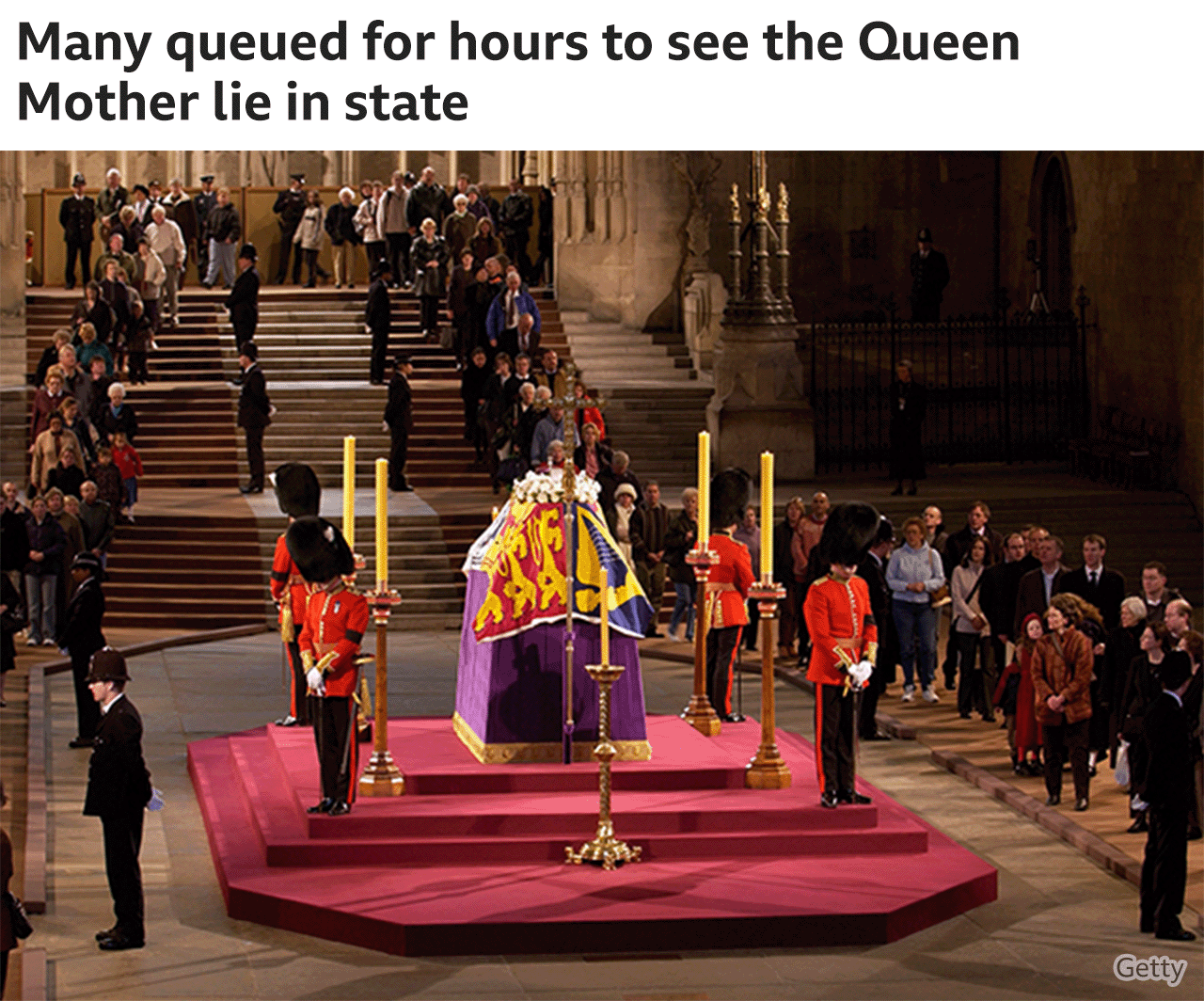
The Queen’s closed coffin will rest on a raised platform, known as a catafalque, beneath the 11th Century hall’s medieval timber roof. Each corner of the platform will be guarded in a continuous vigil by soldiers from units that serve the Royal Household.
On Wednesday 14 September she will be brought to Westminster Hall from Buckingham Palace in a slow procession, accompanied by a military parade.

The coffin will be carried on a gun carriage of the King’s Troop Royal Horse Artillery, with the King and members of the Royal Family walking behind. Guns will be fired from Hyde Park at one minute intervals throughout the procession, which is expected to arrive at Westminster Hall at 15:00 BST.
People will be able to watch the procession in person at ceremonial viewing areas along the route, or at a screening site in nearby Hyde Park. The viewing areas and screening will open at 11:00 BST on Wednesday 14 September.
The coffin will be draped in the Royal Standard and once in Westminster Hall it will be topped with the Imperial State Crown, orb and sceptre.
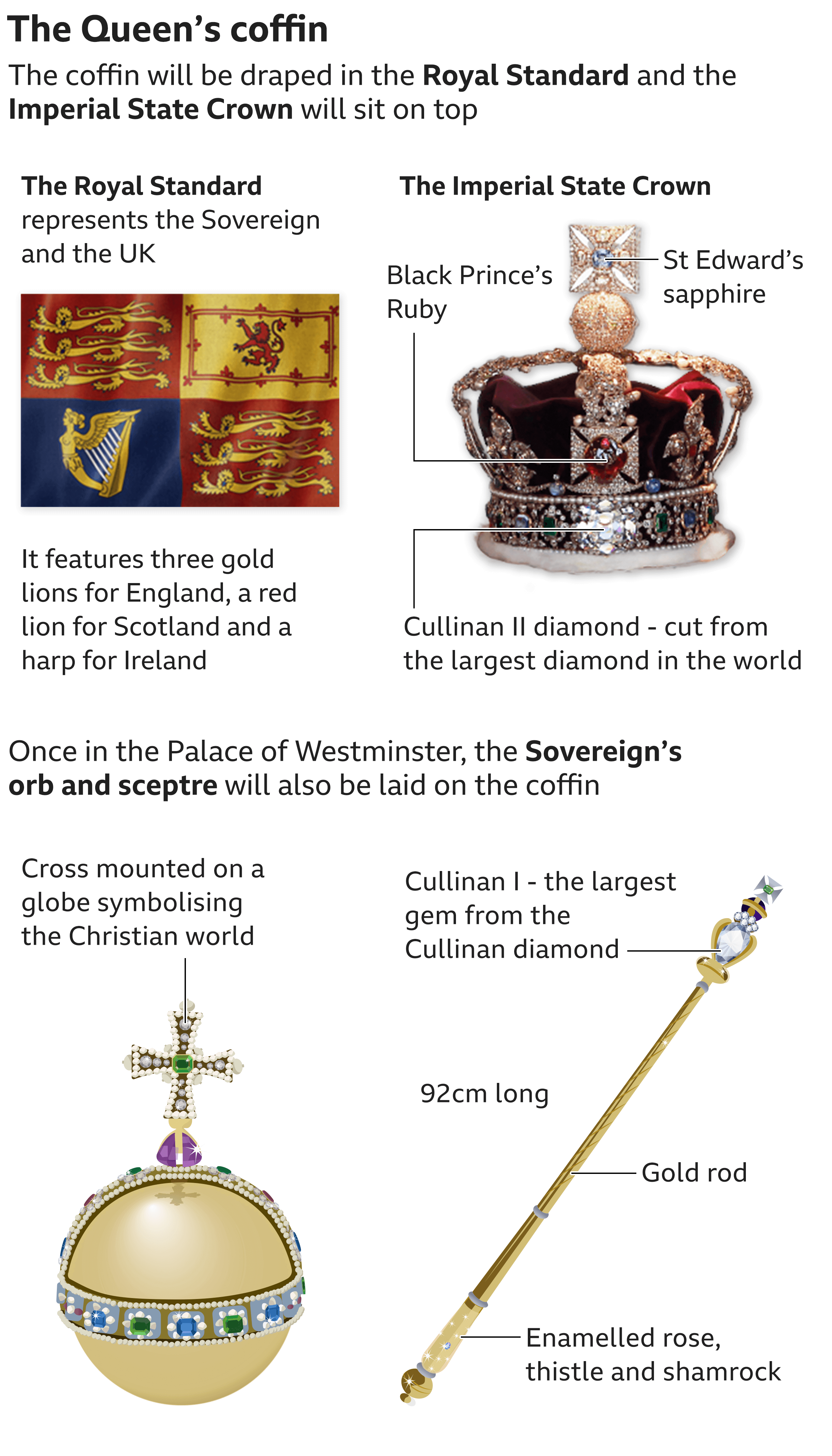
After the coffin is placed in position in the hall, a short service will be held, attended by the King and members of the Royal Family. Afterwards the public will be allowed to enter.
Queues are expected to be very long and there will be airport-style security, with only one small bag per person allowed. More details on the queue route will be released soon.
The Queen’s funeral
The Queen’s state funeral will take place at Westminster Abbey at 11:00 BST on Monday 19 September. The day has been declared a Bank Holiday across the UK.
There hasn’t been a monarch’s funeral service in the Abbey since the 18th Century, although the funeral of the Queen Mother was held there in 2002.
Heads of state from across the world will be flying in to join members of the Royal Family to remember the life and service of the Queen. Senior UK politicians and former prime ministers will also be there.
The day will begin as the Queen’s coffin is carried from Westminster Hall to Westminster Abbey on the State Gun Carriage of the Royal Navy.
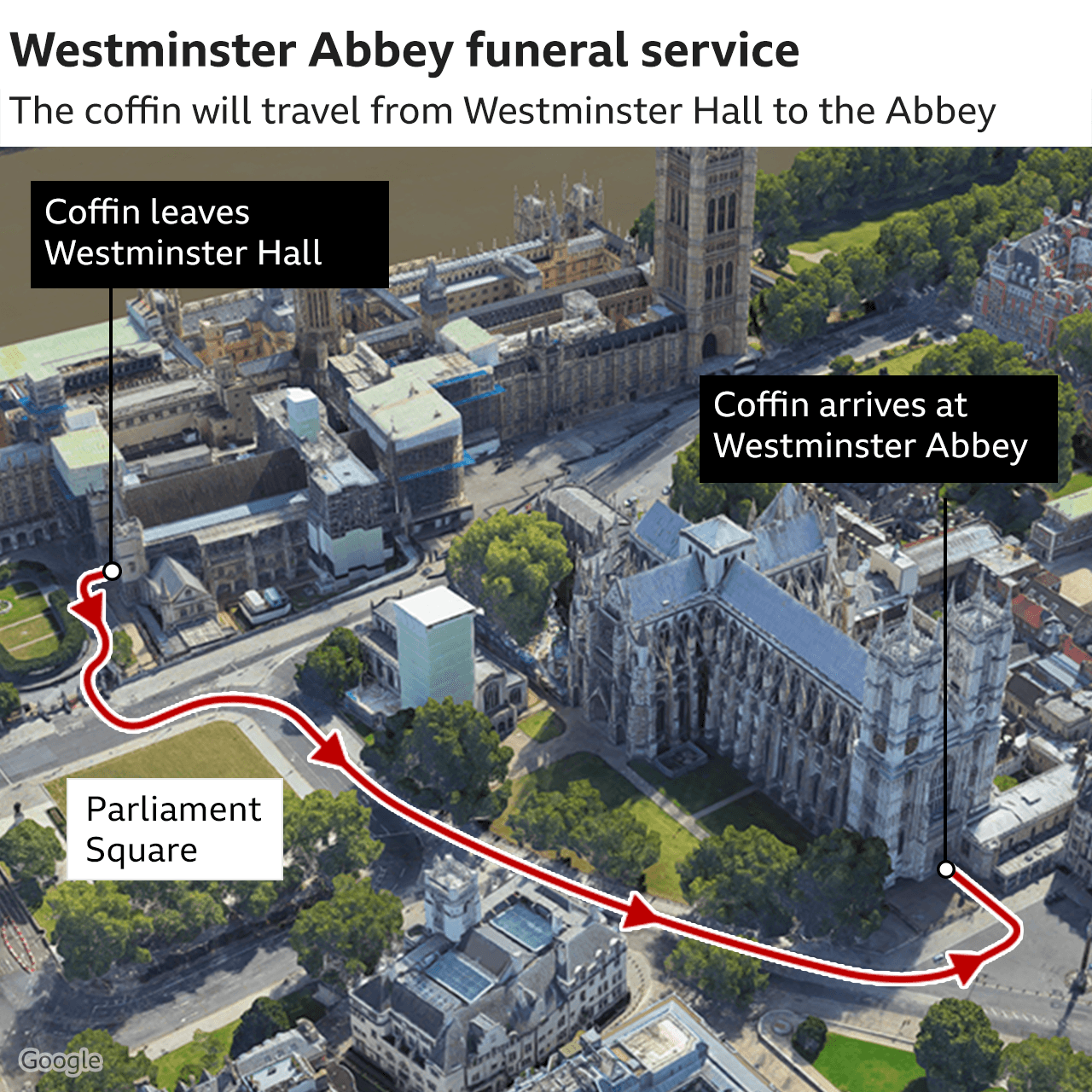
The gun carriage was last seen in 1979 for the funeral of Prince Philip’s uncle, Lord Mountbatten, drawn by 142 sailors from the Royal Navy.
Senior members of the Royal Family, including the new King, are likely to follow in procession.
The service will likely be conducted by the Dean of Westminster David Hoyle, with the Archbishop of Canterbury Justin Welby giving the sermon. Prime Minister Liz Truss may be called on to read a lesson.
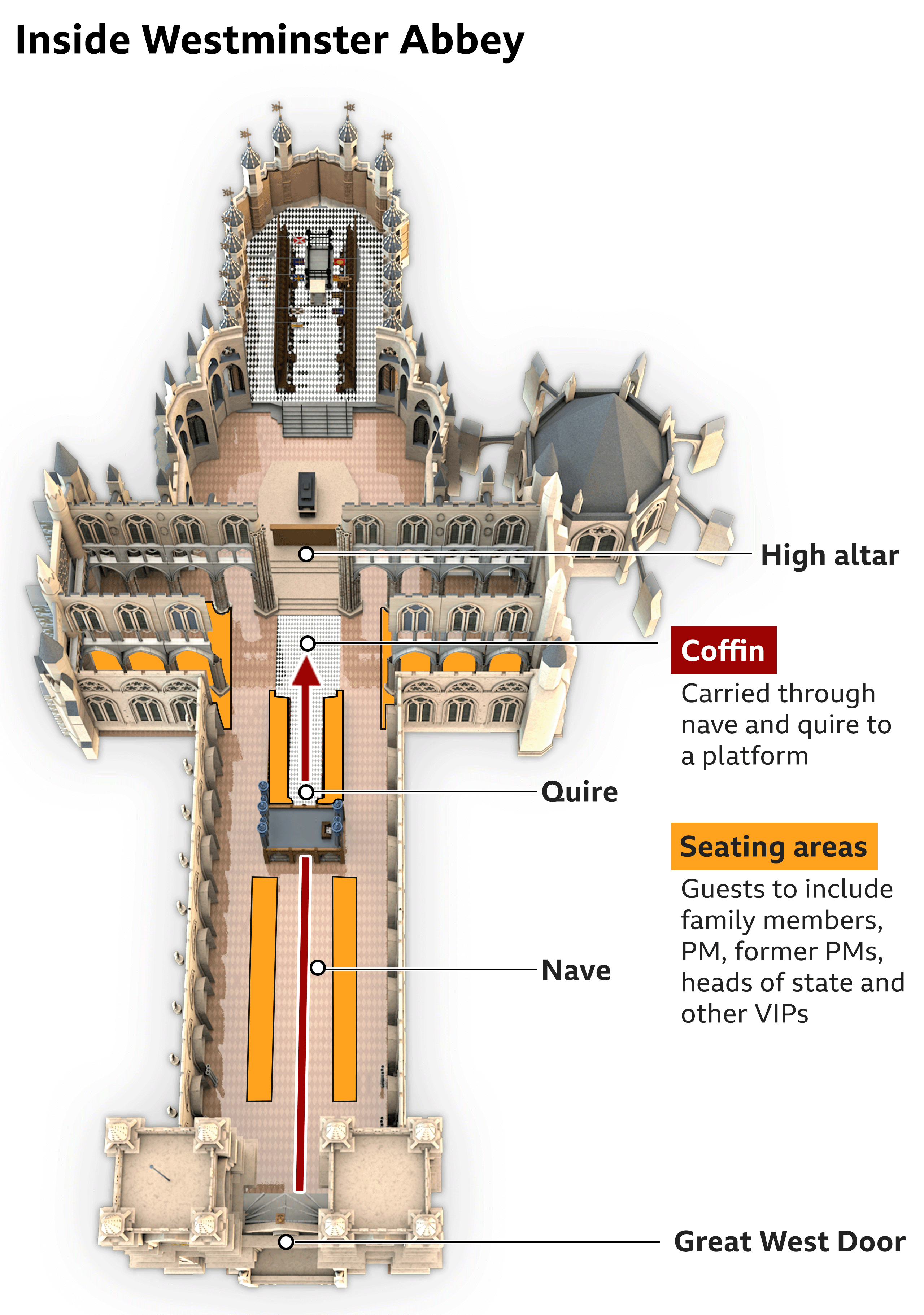
Following the funeral service, the Queen’s coffin will be drawn in a walking procession from the abbey to Wellington Arch, at London’s Hyde Park Corner before heading to Windsor by hearse.
The Queen’s coffin will make its final journey that afternoon to St George’s Chapel in Windsor Castle.
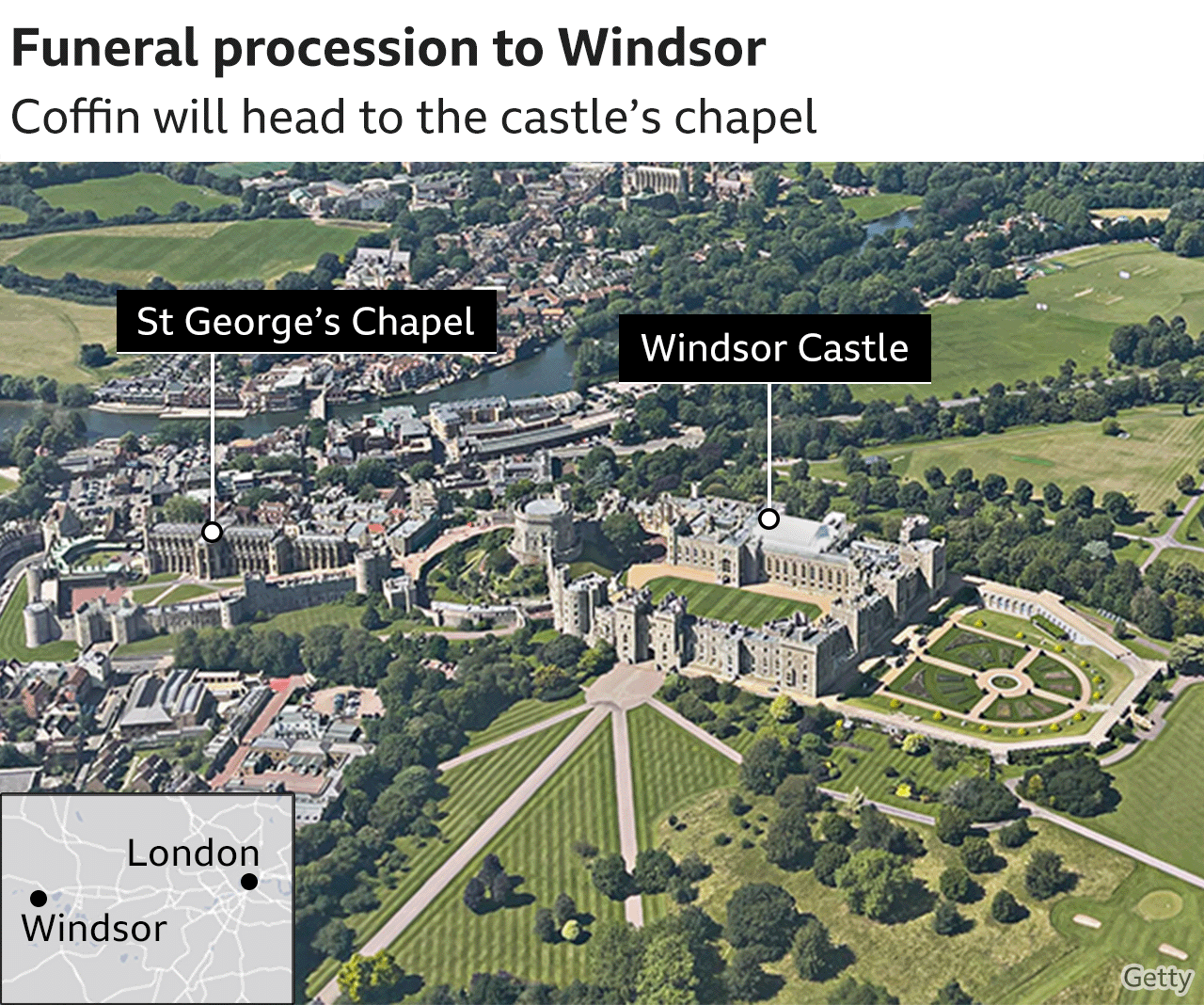
The King and senior members of the Royal Family are expected to join the procession in the Quadrangle in Windsor Castle before the coffin enters St George’s Chapel for a committal service.
St George’s Chapel is the church regularly chosen by the Royal Family for weddings, christenings and funerals. It is where the Duke and Duchess of Sussex, Prince Harry and Meghan, got married and where the Queen’s late husband Prince Philip’s funeral was held.
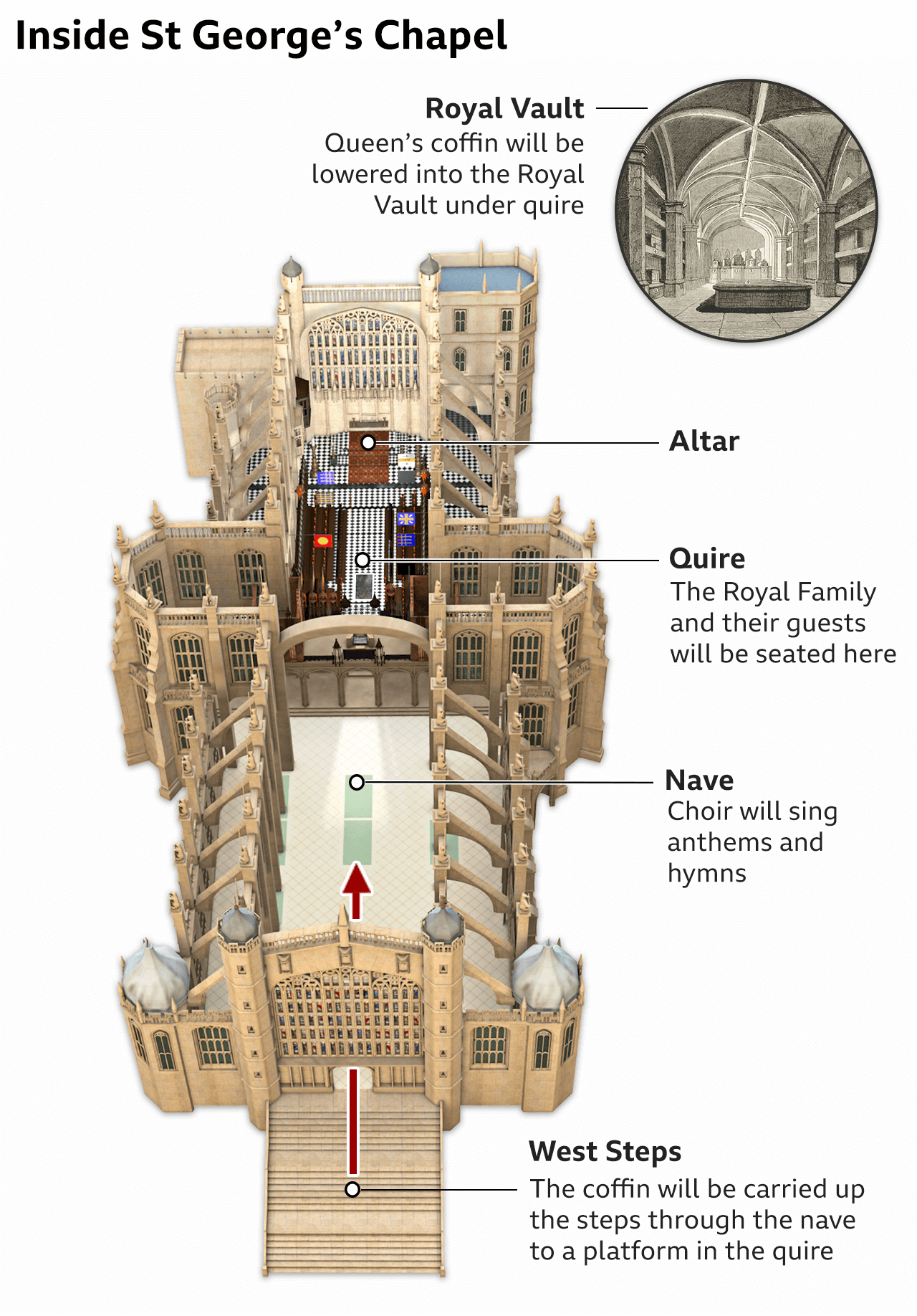
The Queen’s coffin will be lowered into the Royal Vault before being interred in the King George VI memorial chapel, located inside St George’s Chapel.

Source: bbc.co.uk

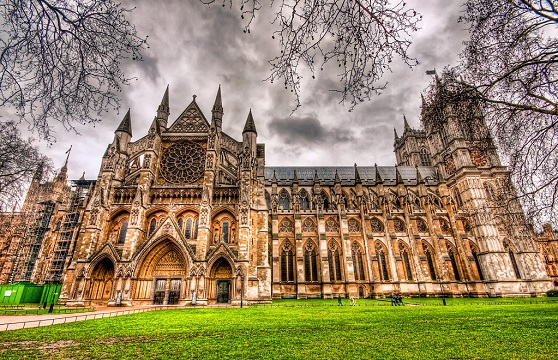


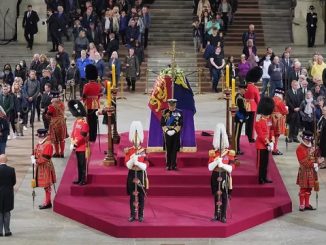
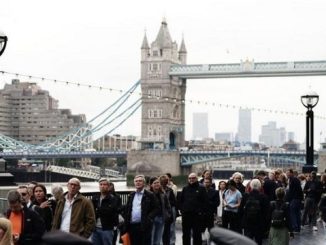
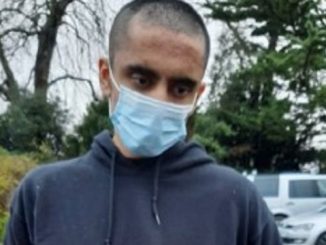
Be the first to comment